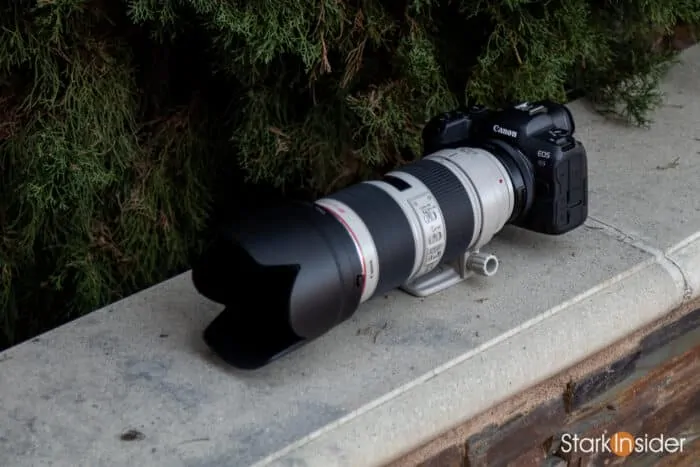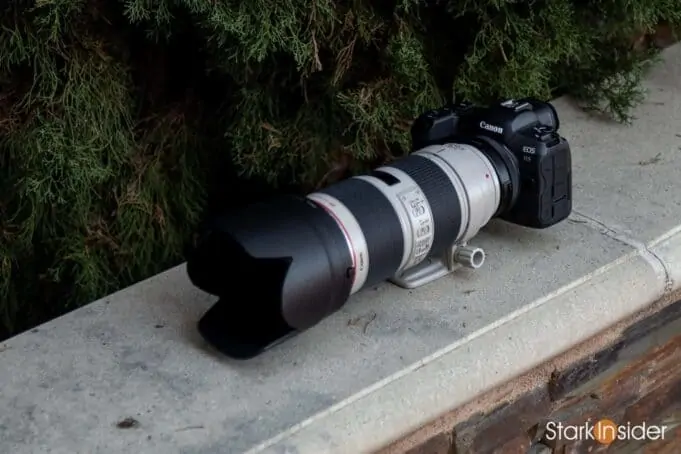Canon recently released its Q1 financials. In short, they were solid, and certainly demonstrated a glimmer of hope for the camera market as a whole — one that is continuing to struggle to survive against the burgeoning threat of the omnipresent smartphone camera.
I finally had a chance to dig through the Canon investor presentation and materials. There’s some interesting takeaways for those whole like to follow not only Canon, but the mirrorless camera market overall.

First, Q1 2021 was the first quarter to achieve sales growth (+7.7%) in eleven quarters (Q2 2018). Meantime, y/y growth for the cameras segment came in even higher (+34.3%) See above chart for more information.
Canon Inc. Q1 Summary
- Attributable net profit was 44.45 billion Japanese yen or $400.49 million, 103 percent higher than last year’s 21.91 billion yen.
- Earnings per share were 42.50 yen or $0.38, compared to 20.68 yen last year.
- Operating profit was 70.56 billion yen or $635.71 million, up 114.6 percent from 32.88 billion yen a year ago.
- First-quarter net sales grew 7.7 percent to 842.65 billion yen or $7.59 billion from prior year’s $782.31 billion yen.
Source: RTTNews via Nasdaq
Also, profits are rising, and despite reporting that effects of COVID-19 are still “strong.” Toshizo Tanaka, CFO of Canon Inc., said, “even under such conditions, the markets for cameras and laser printers, which had been shrinking until recently, began to show signs of bottoming out.”
So perhaps those who want to shoot exclusively on their smartphones have sold off their ILE cameras and moved on, leaving us dedicated DSLR and mirrorless shooters as a smaller, yet loyal market base.
For FY 2021, Canon revised upwards its guidance, with camera sales for the full fiscal year to grow by +11%. Given the pandemic, and shrinking buying base for DSLR and mirrorless cameras at large, this is impressive. The company now expects to sell 2.9 million camera units this year.
Part of the reason are new mirrorless models.
“In the first quarter, revenue was significantly higher than last year, as sales remained strong, driven by the EOS R5 and EOS R6 which were launched in the second half of last year,” said Tanka. “Additionally, the synergy effect of having competitive camera bodies and expanding our lineup of RF lens, which command high margins, led to an increase in average selling prices. This, and the establishment of efficient online sales activities nurtured through COVID-19 is leading to an improvement in profitability.”
It would seem Canon’s move to mirrorless and the launch of the new RF mount and the new EOS R5 and R6 models seems to be a winning strategy.

Tanka also mentioned the in-development EOS R3. That high end model will represent a sort of mirrorless version of the famed Canon 1D X Mark III. Expect the price to match the performance.
As an R5 owner I was pleased to see these results. Not because it has any impact on the camera itself (though it could certainly impact the support for the camera in the future should the company suffer financial losses), but because it’s a good sign for the industry. Competition is good. While it’s nice to see relatively new players enter the space, such as Blackmagic Design, Z-cam and even Sigma, it’s also nice to see the established players such as Canon, Nikon and Sony adjust to a rapidly changing marketplace.
Now I will sign off here with my usual complaint: the user interface.
Camera manufacturers need to do better, way better, when it comes to UI design and usability. We’ve all become accustomed to our Androids and iPhones. They’re easy to use. Even fun to use. Touchscreens are responsive and layouts are intuitive, often even featuring beautiful design ethos. Your DSLR or mirrorless camera? Not so much. Sort of like these menus and interfaces are stuck in the 1990’s — even my recently re-discovered (Spring cleaning!) Motorola Droid from 2009 does better in this regard. What on earth?
ALSO SEE: Canon EOS R5: Reviews mostly positive, with one common complaint
Basically, the traditionalists like Canon, Sony and Nikon need software talent. Modern software talent. Google, Facebook, Apple and Microsoft, among the usual litany of tech players, have this in spades. Unless the old guard re-tool here and modernize they will eventually face a reckoning. Consumers just expect a UI that looks like something resembling their smartphone or favorite app. Scrolling through my 80D or R5 settings is not the hardest thing in the world to be fair, but look at what Blackmagic has done with their interfaces on the Pocket 4K, 6K and 6K Pro. That’s pretty stuff. More importantly, it enables operators to move faster with more accuracy when changing settings, resulting in more efficient and successful shoots.
Good on Canon with the financial improvement. Let’s hope the team can take their designs even further with dramatic new UIs and overall designs. Come on now. EVs are here and going mainstream, I know they can do it.



